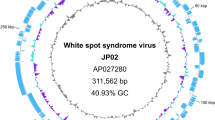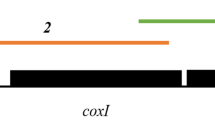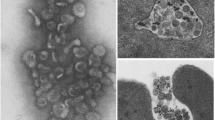Abstract
Schistosoma japonicum and Ascaris suum are considered as the major parasites of human which cause various life threatening diseases such as schistomiasis and ascariasis. The codon usage bias (CUB) is known as the phenomenon of more usage of a specific codon than the other synonymous codons for an amino acid. The factors that influence the codon usage bias are mutation pressure, natural selection, gene expression, gene length, GC content, RNA stability, recombination rates, codon position etc. Here we had used various bioinformatic tools and statistical analyses to understand the compositional features, expression level and codon usage bias in the genes of these two species.After estimating the effective number of codon (ENC) in both the species, codon usage bias was found to be low and gene expression was high. The nucleobase A and T were used most often than C and G. From neutrality plot and correspondence analysis it was found that both natural selection and mutation pressure played an important role in shaping the codon usage pattern of both species. Moreover, natural selection played a major role while mutation pressure played a minor role in shaping the codon usage bias in S. japonicum and A.suum. This is the first report on the codon usage biology in S. japonicum and A.suum, and the factors influencing their codon usage bias. These results are expected to be useful for genetic engineering and evolutionary studies.
Similar content being viewed by others
Reference
Anderson R.M., May R.M., Anderson B. 1992. Infectious diseases of humans: dynamics and control: Wiley Online Library, 16, 208–2012. DOI: 10.1111/j.1753-6405.1992.tb00056.x
Behura S.K., Severson D.W. 2013. Codon usage bias: causative factors, quantification methods and genome wide patterns: with emphasis on insect genomes. Biological Reviews, 88, 49–61. DOI: 10.1111/j.1469-185X.2012.00242.X
Carlton E.J., Hsiang M., Zhang Y., Johnson S., Hubbard A., Spear R.C. 2010. The impact of Schistosoma japonicum infection and treatment on ultrasound-detectable morbidity: a five-year cohort study in Southwest China. PLoS Negl Trop Dis, 4, e685. DOI: https://doi.org/10.1371/journal.pntd.0000685
Chen L., Yang D., Liu T., Nong X., Huang X., Xie Y, et al. 2013. Synonymous codon usage patterns in different parasitic platyhelminth mitochondrial genomes. Genetics and Molecular Research, 12, 587–596. DOI: http://dx.doi.org/10.4238/2013.February.27.8
Dold C., Holland C.V. 2011. Ascaris and ascariasis. Microbes and Infection, 13, 632–637. DOI: https://doi.org/10.1016/j.micinf2010.09.012
Drummond D.A., Wilke C.O. 2008. Mistranslation-induced protein misfolding as a dominant constraint on coding-sequence evolution. Cell, 134, 341–352. DOI: https://doi.org/10.1016/j.cell.2008.05.042
Ellis J, Morrison D. 1995. Schistosoma mansoni: patterns of codon usage and bias. Parasitology, 110, 53–60. DOI: https://doi.org/10.1017/S003118200008104X
Fadiel A., Lithwick S., Gamra M. 2002. Codon usage analysis of Ascaris species influence of base and intercodon frequencies on the synonymous codon usage. Journal of the Egyptian Society of Parasitology, 32, 625–638. DOI: 0000-0002-5759-6891
Gouy M., Gautier C. 1982. Codon usage in bacteria: correlation with gene expressivity. Nucleic Acids Research, 10, 7055–7074. DOI: https://doi.org/10.1093/nar/10.22.7055
Greenacre M.J. 1984. Theory and applications of correspondence analysis
Hall A., Hewitt G., Tuffrey V., De Silva N. 2008. A review and meta analysis of the impact of intestinal worms on child growth and nutrition. Maternal and Child Nutritio. 4, 118–236. DOI: 10.1111/j.1740-8709.2007.00127.X
Ishii A., Tsuji M., Tada I. 2003. History of Katayama disease: schistosomiasis japonica in Katayama district, Hiroshima, Japan. Parasitology International, 52, 313–319. DOI: https://doi.org/10.1016/S1383-5769(03)00046-1
Jenkins G.M., Holmes E.C. 2003. The extent of codon usage bias in human RNA viruses and its evolutionary origin. Virus Research, 92, 1–7. DOI: https://doi.org/10.1016/S0168-1702(02)00309-X
Jia T-W., Zhou X-N., Wang X-H., Utzinger J., Steinmann P., Wu X-H. 2007. Assessment of the age-specific disability weight of chronic schistosomiasis japonica. Bulletin of the World Health Organization, 85, 458–465. DOI: http://dx.doi.org/10.1590/S0042-96862007000600012
Jia W., Higgs P.G. 2008. Codon usage in mitochondrial genomes: distinguishing context-dependent mutation from translational selection. Molecular Biology and Evolution, 25, 339–351. DOI: https://doi.org/10.1093/molbev/msm259
Jia X., Liu S., Zheng H., Li B., Qi Q., Wei L., et al. 2015. Non-uniqueness of factors constraint on the codon usage in Bombyx mori. BMC genomics, 16, 356. DOI: 10.1186/s12864-015-1596-z
Kahali B., Basak S., Ghosh T.C. 2007. Reinvestigating the codon and amino acid usage of S. cerevisiae genome: a new insight from protein secondary structure analysis. Biochemical and biophysical research communications, 354, 693–699. DOI: https://doi.org/10.1016/j.bbrc.2007.01.038
Karlin S., Mrázek J. 1996. What drives codon choices in human genes? Journal of Molecular Biology, 262, 459–472. DOI: https://doi.org/10.1006/jmbi.1996.0528
Knight R.D., Freeland S.J., Landweber L.F. 2001. A simple model based on mutation and selection explains trends in codon and amino-acid usage and GC composition within and across genomes. Genome Biology, 2, 1. DOI: 10.1186/gb-2001-2-4-research0010
Lafay B, Sharp PM, Lloyd AT, McLean MJ, Devine KM, Wolfe KH. 1999. Proteome composition and codon usage in spirochaetes: species-specific and DNA strand-specific mutational biases. Nucleic acids research, 27, 1642–1649. DOI: https://doi.org/10.1093/nar/27.7.1642
Liu G-H., Wu C-Y., Song H-Q., Wei S-J., Xu M-J., Lin R-Q., et al. 2012. Comparative analyses of the complete mitochondrial genomes of Ascaris lumbricoides and Ascaris suum from humans and pigs. Gene, 492, 110–116. DOI: https://doi.org/10.1016/j.gene.2011.10.043
Liu X., Wu C., Chen AY-H. 2010. Codon usage bias and recombination events for neuraminidase and hemagglutinin genes in Chinese isolates of influenza A virus subtype H9N2. Archives of Virology, 155, 685–693. DOI: https://doi.org/10.1007/s00705-010-0631-2
Lobry J. 1995. Properties of a general model of DNA evolution under no-strand-bias conditions. Journal of Molecular Evolution, 40, 326–330. DOI: https://doi.org/10.1007/BF00163237
Mackiewicz P., Gierlik A., Kowalczuk M., Dudek M.R., Cebrat S. 1999. How does replication-associated mutational pressure influence amino acid composition of proteins? Genome Research, 9, 409–416. DOI: 10.1101/gr.9.5.409
Mazumder G., Uddin A., Chakraborty S. 2016a. Expression levels and codon usage patterns in nuclear genes of the filarial nematode Wucheraria bancrofti and the blood fluke Schistosoma haematobium. Journal of Helminthology, 91, 72–79. DOI: https://doi.org/10.1017/S0022149X16000092
McInerney J.O. 1998. Replicational and transcriptional selection on codon usage in Borrelia burgdorferi. Proceedings of the National Academy of Sciences, 95, 10698–10703. PMCID: PMC27958
Oliver-Gonzalez J., Bauman P.M., Benenson A. 1955. Immunological aspects of infections with Schisiosoma mansoni. American Journal of Tropical Medicine and Hygiene, 4, 443–452. DOI: https://doi.org/10.4269/ajtmh.1955.4.443
Perrière G., Lobry J.R, Thioulouse J. 1996. Correspondence discriminant analysis: a multivariate method for comparing classes of protein and nucleic acid sequences. Computer Applications in the Biosciences:CABIOS, 12, 519–524. DOI: https://doi.org/10.1093/bioinformatics/12.6.519
Rocha E.P., Danchin A., Viari A. 1999. Universal replication biases in bacteria. Molecular Microbiology, 32, 11–16. DOI: 10.1046/j.1365-2958.1999.01334.X
Romero H, Zavala A, Musto H. 2000. Codon usage in Chlamydia trachomatis is the result of strand-specific mutational biases and a complex pattern of selective forces. Nucleic acids research 28: 2084–2090. DOI: https://doi.org/10.1093/nar/28.10.2084
Shah P., Gilchrist M.A. 2011. Explaining complex codon usage patterns with selection for translational efficiency, mutation bias, and genetic drift. Proceedings of the National Academy of Sciences, 108, 10231–10236. DOI: 10.1073/pnas.1016719108
Sharp P.M., Bailes E., Grocock R.J., Peden J.F., Sockett R.E. 2005. Variation in the strength of selected codon usage bias among bacteria. Nucleic Acids Research, 33, 1141–1153. DOI: https://doi.org/10.1093/nar/gki242
Shields D.C., Sharp P.M. 1987. Synonymous codon usage in Bacillus subtilis reflects both translational selection and mutational biases. Nucleic Acids Research, 15, 8023–8040. DOI: https://doi.org/10.1093/nar/15.19.8023
Shuhua X., Tanner M., N’Goran E.K., Utzinger J., Chollet J., Bergquist R. et al. 2002. Recent investigations of artemether, a novel agent for the prevention of schistosomiasis japonica, mansoni and haematobia. Acta Tropica, 82, 175–181. DOI: https://doi.org/10.1016/S0001-706X(02)00009-8
Stenico M., Lloyd A.T., Sharp P.M. 1994. Codon usage in Caenorhabditis elegans: delineation of translational selection and mutational biases. Nucleic Acids Research, 22, 2437–2446. DOI: https://doi.org/10.1093/nar/22.13.2437
Sueoka N. 1988. Directional mutation pressure and neutral molecular evolution. Proceedings of the National Academy of Sciences, 85, 2653–2657. PMID:3357886
Sueoka N. 1999. Two aspects of DNA base composition: G+ C content and translation-coupled deviation from intra-strand rule of A = T and G = C. Journal of Molecular Evolution, 49, 49–62. DOI: https://doi.org/10.1007/PL00006534
Uddin A., Chakraborty S. 2014. Mutation Pressure Dictates Codon Usage Pattern in Mitochondrial Atpase8 in Some Mammalian Species. International Journal Scientific Researc. 3, 2206–2212
Wan X-F., Xu D., Kleinhofs A., Zhou J. 2004. Quantitative relationship between synonymous codon usage bias and GC composition across unicellular genomes. BMC Evolutionary Biology, 4, 19. DOI: 10.1186/1471-2148-4-19
Warnecke T., Hurst L.D. 2007. Evidence for a trade-off between translational efficiency and splicing regulation in determining synonymous codon usage in Drosophila melanogaster. Molecular Biology and Evolution, 24, 2755–2762. DOI: https://doi.org/10.1093/molbev/msm210
Wedrychowicz H. 2015. Antiparasitic DNA vaccines in 21st century. Acta Parasitologica, 60, 179–189. DOI: https://doi.org/10.1515/ap-2015-0026
Yadav M.K., Swati D. 2012. Comparative genome analysis of six malarial parasites using codon usage bias based tools. Bioinformation, 8, 1230–1239. DOI: 10.6026/97320630081230
Yang X., Luo X., Cai X. 2014. Analysis of codon usage pattern in Taenia saginata based on a transcriptome dataset. Parasites & Vectors, 7, 1. DOI: 10.1186/sl3071-014-0527-1
Zhang Z., Dai W., Dai D. 2013. Synonymous codon usage in TTSuV2: analysis and comparison with TTSuV1. PloS One, 8, e81469. DOI: https://doi.org/10.1371/journal.pone.0081469
Author information
Authors and Affiliations
Corresponding author
Rights and permissions
About this article
Cite this article
Mazumder, G.A., Uddin, A. & Chakraborty, S. Comparative analysis of codon usage pattern and its influencing factors in Schistosoma japonicum and Ascaris suum. Acta Parasit. 62, 748–761 (2017). https://doi.org/10.1515/ap-2017-0090
Received:
Revised:
Accepted:
Published:
Issue Date:
DOI: https://doi.org/10.1515/ap-2017-0090




